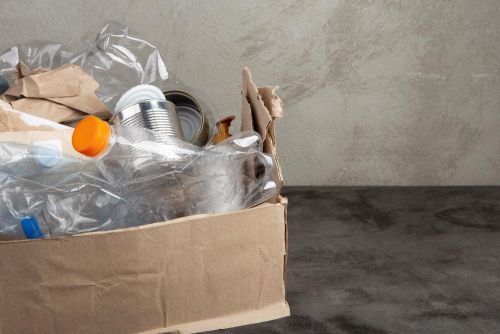Project Cypress is Advancing Carbon Capture and Storage


Cut through the green tape
We don't push agendas. At Net Zero Compare, we cut through the hype and fear to deliver the straightforward facts you need for making informed decisions on green products and services. Whether motivated by compliance, customer demands, or a real passion for the environment, you’re welcome here. We provide reliable information—why you seek it is not our concern.
In the fight against climate change, Project Cypress stands as a beacon of innovation and commitment. Launched in Southwest Louisiana, this groundbreaking initiative aims to achieve net-zero emissions by removing excess carbon dioxide (CO2) from the atmosphere. Through the use of advanced Direct Air Capture (DAC) technology combined with secure geologic storage, Project Cypress represents a significant step toward mitigating the impacts of climate change.
How Project Cypress Started
Project Cypress was born out of a collaborative effort between industry leaders in response to the growing urgency of climate change. The project was initiated by Battelle, Climeworks, and Heirloom, each bringing their expertise to the table. The U.S. Department of Energy supported the project as part of a broader initiative to explore and deploy technologies that can effectively reduce atmospheric CO2 levels. The selection of Southwest Louisiana as the project site was strategic, leveraging the region's geological formations for secure CO2 storage.
"Southwest Louisiana has long been a home to major industry. The region has the workforce, innovative capital, and geographic advantages to become a clean technology capital in the United States."
Source: projectcypress.com

The Mission
The mission of Project Cypress is clear: to advance the technology and infrastructure needed to achieve net-zero emissions. By focusing on direct air capture and permanent CO2 storage, the project aims to reduce the atmospheric concentration of greenhouse gases, thereby mitigating the effects of climate change. Unlike other carbon capture initiatives that may use captured CO2 for fossil fuel recovery, Project Cypress is committed to ensuring that its efforts contribute solely to reducing global carbon levels, not perpetuating fossil fuel use. The ultimate goal is to set a new standard for environmental responsibility and innovation in the fight against climate change.
Technology and Innovation
Project Cypress is at the forefront of technological innovation in the fight against climate change, primarily through its use of Direct Air Capture (DAC) technology. DAC is a cutting-edge method that captures carbon dioxide (CO2) directly from the atmosphere.
What is Direct Air Capture (DAC)?
Direct Air Capture is a process that uses specialized machines to pull in air and filter out CO2. This CO2 is then compressed and can either be stored underground in geological formations or used in other industrial processes. The key innovation of DAC is its ability to remove CO2 directly from the ambient air, as opposed to capturing emissions at the source, like in factories or power plants.
Here’s how DAC generally works:
Air Intake: Large fans draw in air from the environment.
CO2 Capture: The air passes through a filter that captures CO2 molecules using chemical reactions.
CO2 Storage: The captured CO2 is then separated from the filter, compressed, and transported to a storage site.
Permanent Storage: The CO2 is injected deep underground into suitable rock formations, where it is stored permanently.
Collaboration in Innovation
The project combines the expertise of three leading organizations:
Climeworks: Their technology uses modular units equipped with large fans that pull in ambient air. The air passes through a filter containing a solid sorbent material that selectively captures CO2 molecules. Once the filter is saturated, the CO2 is released through a heating process, collected, and then either stored underground or used in other industrial applications. This process is energy-efficient and can be powered by renewable energy sources, making it a sustainable option for carbon removal.
Climeworks' technology is scalable, meaning it can be deployed in various sizes, from small units to large facilities, depending on the needs of the project. This scalability is key to its potential for global impact, as it allows the technology to be adapted to different environments and integrated into broader climate strategies.
Heirloom: Heirloom's technology is centred around the natural process of carbon mineralization, where CO2 from the air reacts with minerals to form stable carbonates, effectively locking away CO2 for thousands of years. Heirloom accelerates this natural process by using technology to enhance the speed at which minerals capture CO2 from the air.
In Project Cypress, Heirloom's role is to manage the mineralization process, ensuring that captured CO2 is permanently stored in a solid, stable form. This method complements the direct air capture technology provided by Climeworks, adding another layer of permanence and safety to the CO2 storage process. Heirloom's contribution is crucial for ensuring that the CO2 removed from the atmosphere does not return, making it a vital component of Project Cypress's mission to combat climate change.
Battelle: Battelle is a key player in Project Cypress, bringing its extensive experience in subsurface science and engineering to the table. Their primary role is to ensure the safe and permanent storage of the captured CO2 deep underground in geological formations. Battelle is responsible for selecting appropriate storage sites, conducting rigorous assessments to ensure long-term stability, and overseeing the injection and monitoring processes. Their expertise guarantees that the stored CO2 remains securely sequestered, preventing it from re-entering the atmosphere and contributing to climate change.
The current state of the project
As of now, Project Cypress is in the development phase, with ongoing work to build the necessary infrastructure for capturing and storing CO2. The project partners are focused on advancing the technology and preparing for large-scale implementation in the near future. The July 2024 Project Cypress newsletter highlights significant progress, including advancements in site development and regulatory approvals for CO2 storage. It also details successful community engagement efforts, ensuring local support for the project. For more details, you can refer to the newsletter.

More related content

Extended Producer Responsibility (EPR) for Packaging: Country-by-Co...

What Is Scope 3? Understanding Indirect Emissions and Their Regulat...

The EU's Omnibus Proposal: A Deep Dive
